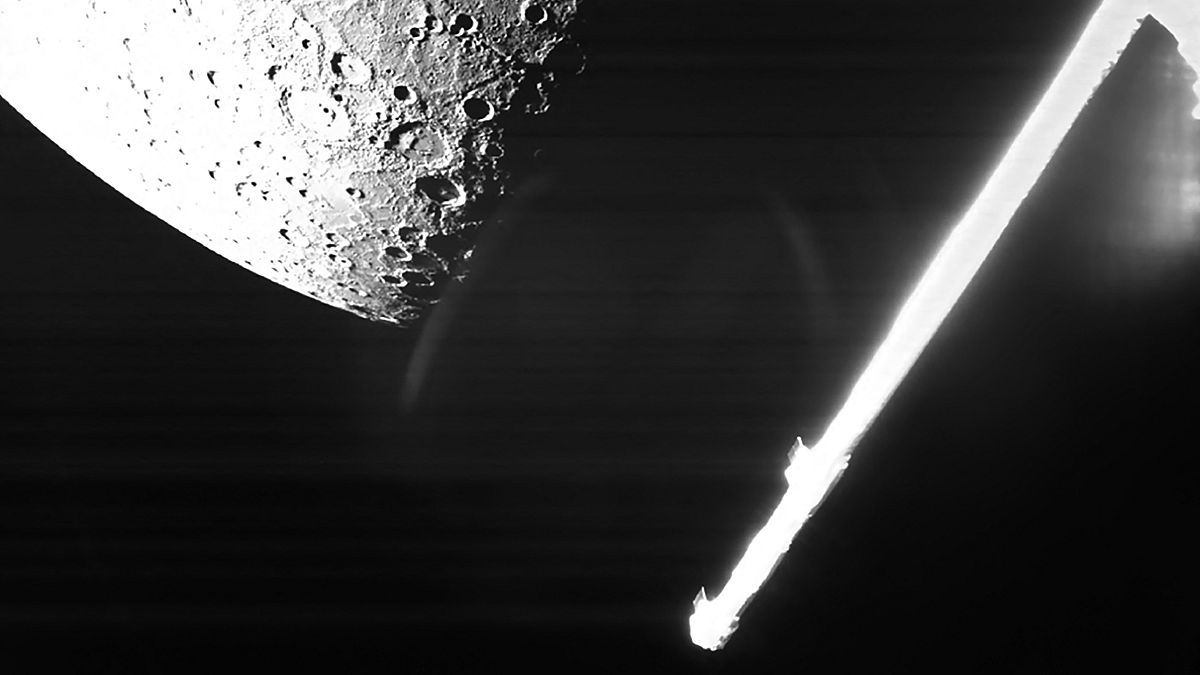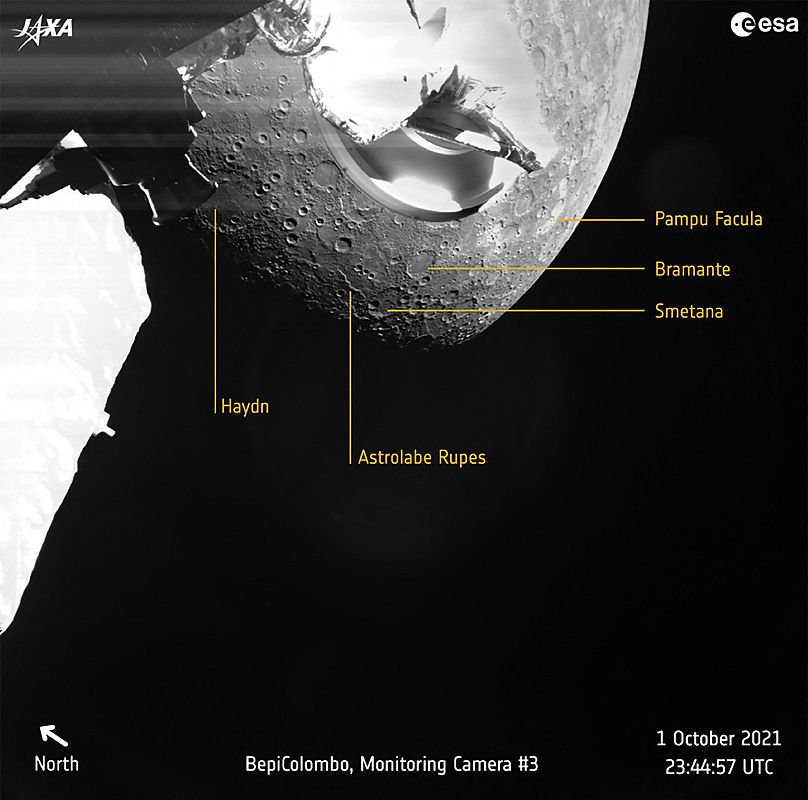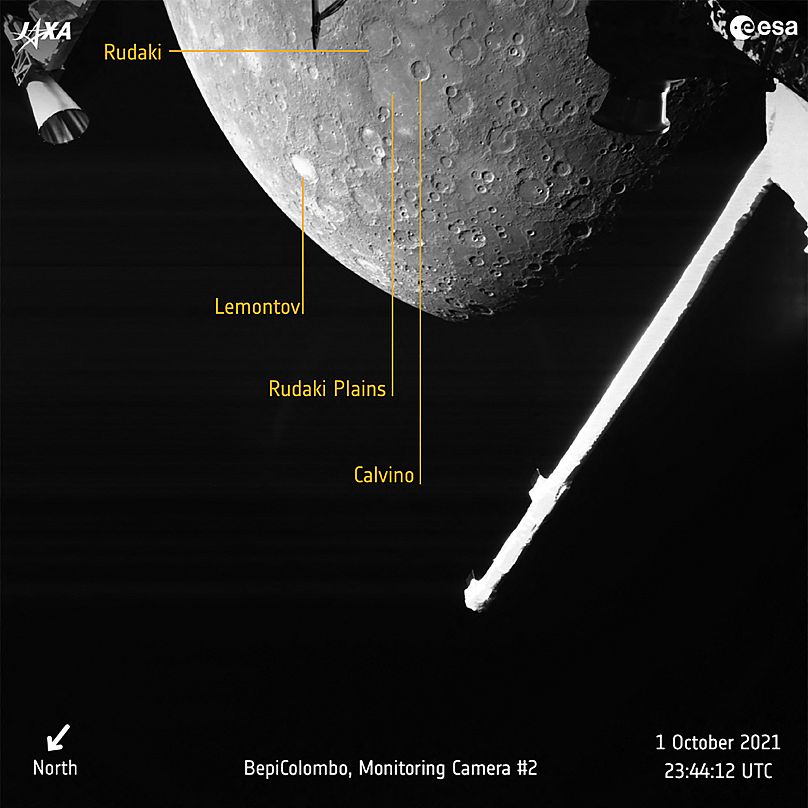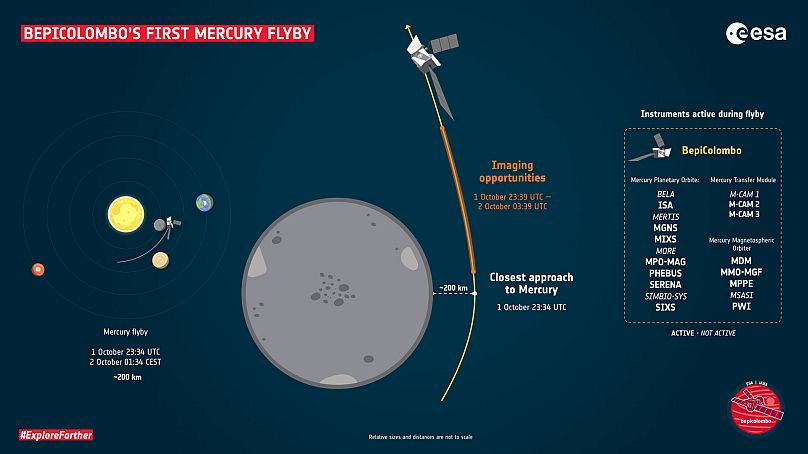The ESA and JAXA mission has already had a striking view of the planet closest to the Sun, around which it will have to orbit in 2025.
Never has a space probe come so close to the "Swift Planet".
On Saturday, the European Space Agency (ESA) captured its first pictures of Mercury, the closest planet to the Sun, with the BepiColumbo satellite which flew over it at an altitude of 200 km.
This is the first time since its launch in 2018 that this satellite, which carries probes from European (ESA) and Japanese (JAXA) space agencies, has flown over its "target" planet.
BepiColombo is not due to orbit Mercury in 2025, as the smallest of the planets in our solar system is very difficult to reach.
Road to Mercury
During the flyby, surveillance cameras provided black and white snapshots. But the satellite has now arrived on the night side of the planet where the conditions are "not ideal" to take images directly at the closest approach (199 km), and the closest could only be taken "at a distance of about 1,000 km," the ESA said in a statement.
In the pictures, it’s possible to identify large impact craters on the planet’s surface, formed by vast lava effusions billions of years ago.
"It's amazing to finally see our target planet," Elsa Montagnon, spacecraft operations manager for the mission, said.
The two orbiters, Mercury Planetary Orbiter (MPO) and Mercury Magnetospheric Orbiter (MMO) are combined with a Solar Electric Propulsion Module (SEPM), and a Chemical Propulsion Module (CPM), launched with Arian 5 rocket.
How do planets form and interact with the Sun?
The BepiColombo mission aims to study the composition of Mercury in order to solve the mystery of the formation of this scorched planet - the least explored of the four rocky planets in the solar system.
Among the main objectives, the ESA and JAXA want to thoroughly study Mercury’s makeup as a planet; its form, interior, structure, geology, composition and craters.
The two probes could capture data on Mercury’s vestigial atmosphere (exosphere), its magnetised envelope (magnetosphere) and the origin of its magnetic field.
Nine overflights of Mercury are planned in total before the satellite can establish a stable orbit around its final destination, involving a complex trajectory that has also seen the satellite fly over Venus and Earth.
BepiColombo could not be sent directly to Mercury. The Sun's attraction is so strong that it would be necessary to perform a gigantic braking manoeuvre in order to succeed in placing the satellite in its orbit, which would require loading too much fuel for a spacecraft of this size.
The gravity exerted by the Earth and Venus - called gravitational assistance - allows it to slow down "naturally" during its journey.
The next flight over Mercury by the mission will take place on June 23, 2022. There will then be another in 2023, two in 2024 and a final one at the start of 2025.
The orbit around the planet is scheduled for December 5, 2025.
Who is behind BepiColombo?
Professor Giuseppe “Bepi” Colombo was an Italian mathematician and engineer who collaborated with NASA, beginning in 1970.
The concept of using a long tether to support a spacecraft from an orbiting platform is attributed to him.
Colombo was also one of the initiators of ESA’s mission to Comet Halley, but he died in 1984 before the project was completed.
To commemorate this scientist, ESA has named its Mercury mission BepiColombo. It also awards a 'Colombo fellowship' each year to a European scientist working in the field of astronautics.
So far, only two missions, NASA's Mariner 10 and MESSENGER, visited this Moon-like world which is so close to the Sun that temperatures on its surface regularly reach over 400°C.
In 2011, MESSENGER was the first and so far only satellite to enter into orbit around Mercury.
Now, the joint mission BepiColombo hopes to shed light on many unsolved mysteries of the innermost planet of the Solar System.






